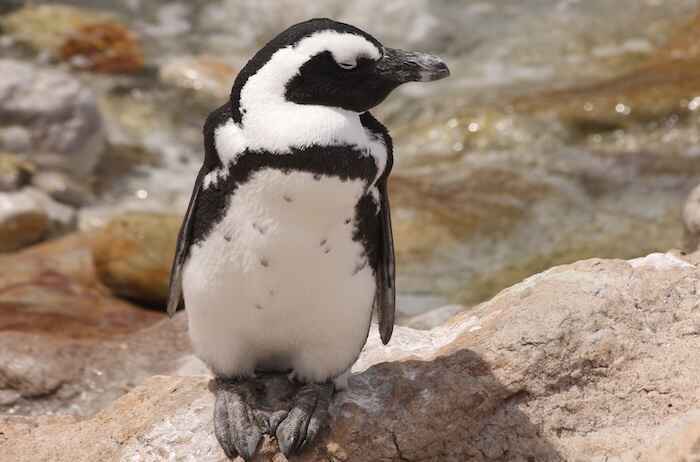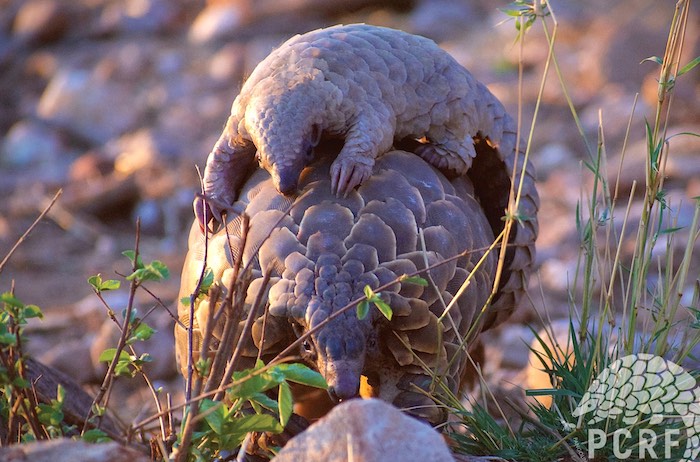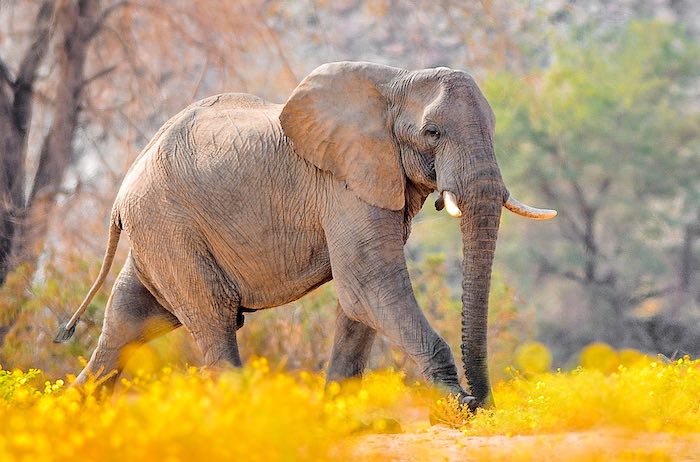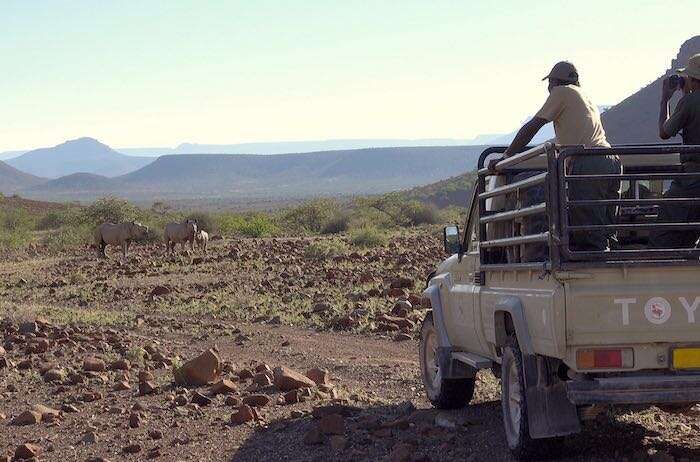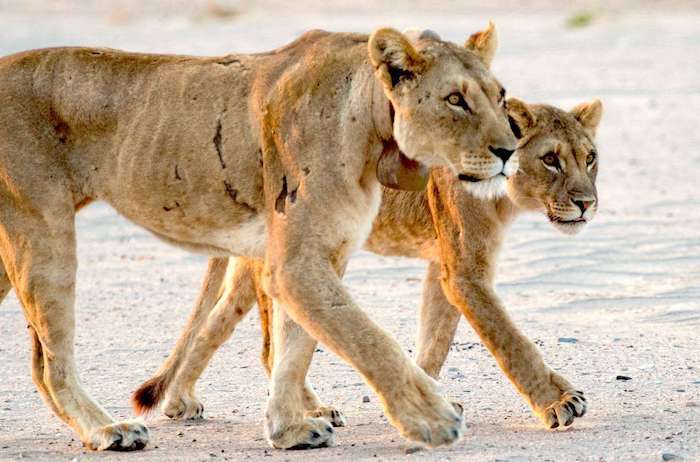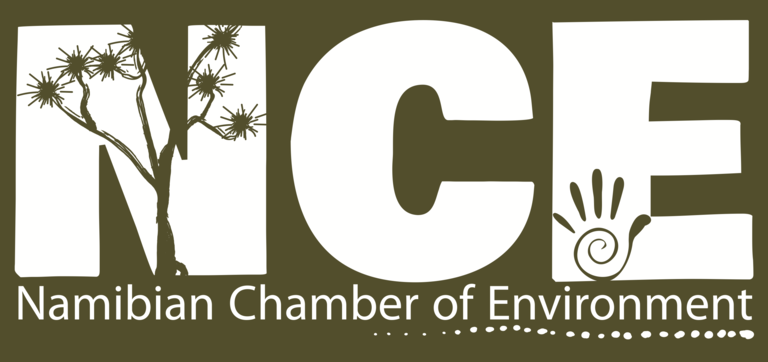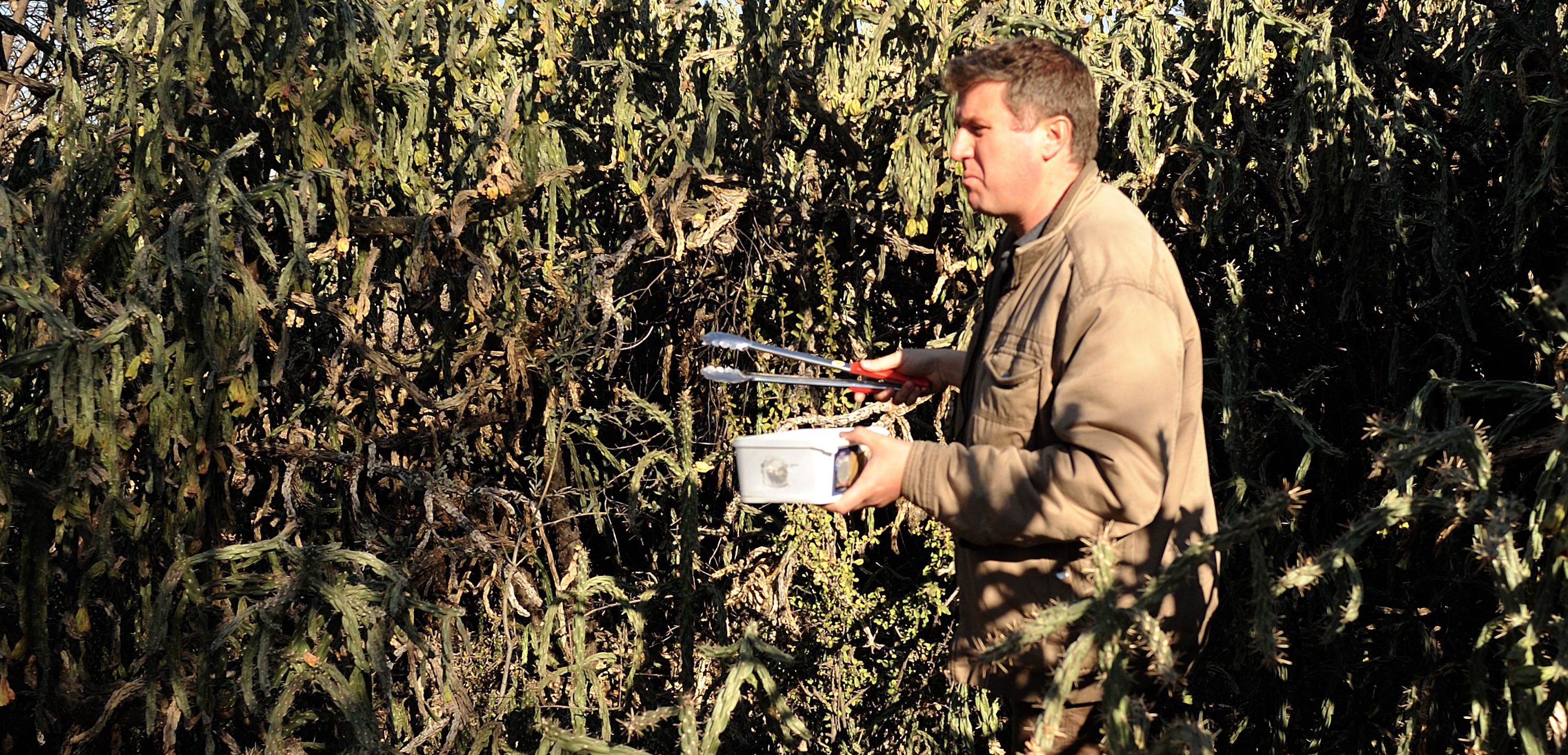
Bring in the Bug Squad
Controlling Alien Invasive Plants in Namibia
9th September 2021
Can a plant pose a major threat to biodiversity, ecosystem function and agriculture? If it has been transported from its native environment to another continent with a similar climate, the answer is yes. Some exotic (or alien) plants invade the new land with such vigour and speed that they become impossible to control, and an out of control plant can create an ecological nightmare. But why does this happen? And when it does, can we ever get it back under control?
When the aliens invade
Plants are part of a natural ecosystem, which involves many different species interacting with each other over time. Within this system, most plants have natural enemies that will feed on them, which in turn are eaten by their own enemies (i.e. predators) further up the food chain. When a plant is taken out of this system and translocated far from its natural enemies, it is released from nature's checks and balances.
If the new environment is unsuitable for the plant (e.g. relocated from a cold, wet climate to a hot, dry one), it is unlikely to survive without someone tending to it in a garden. Consequently, not all exotic or alien plants will invade a new land. When the new conditions are similar to its native conditions, however, plants can take full advantage of growing and reproducing without their natural enemies. This is exactly what happens when cactus species from arid parts of the Americas are brought to similarly arid parts of Namibia and South Africa or Australia. In short, they go crazy.
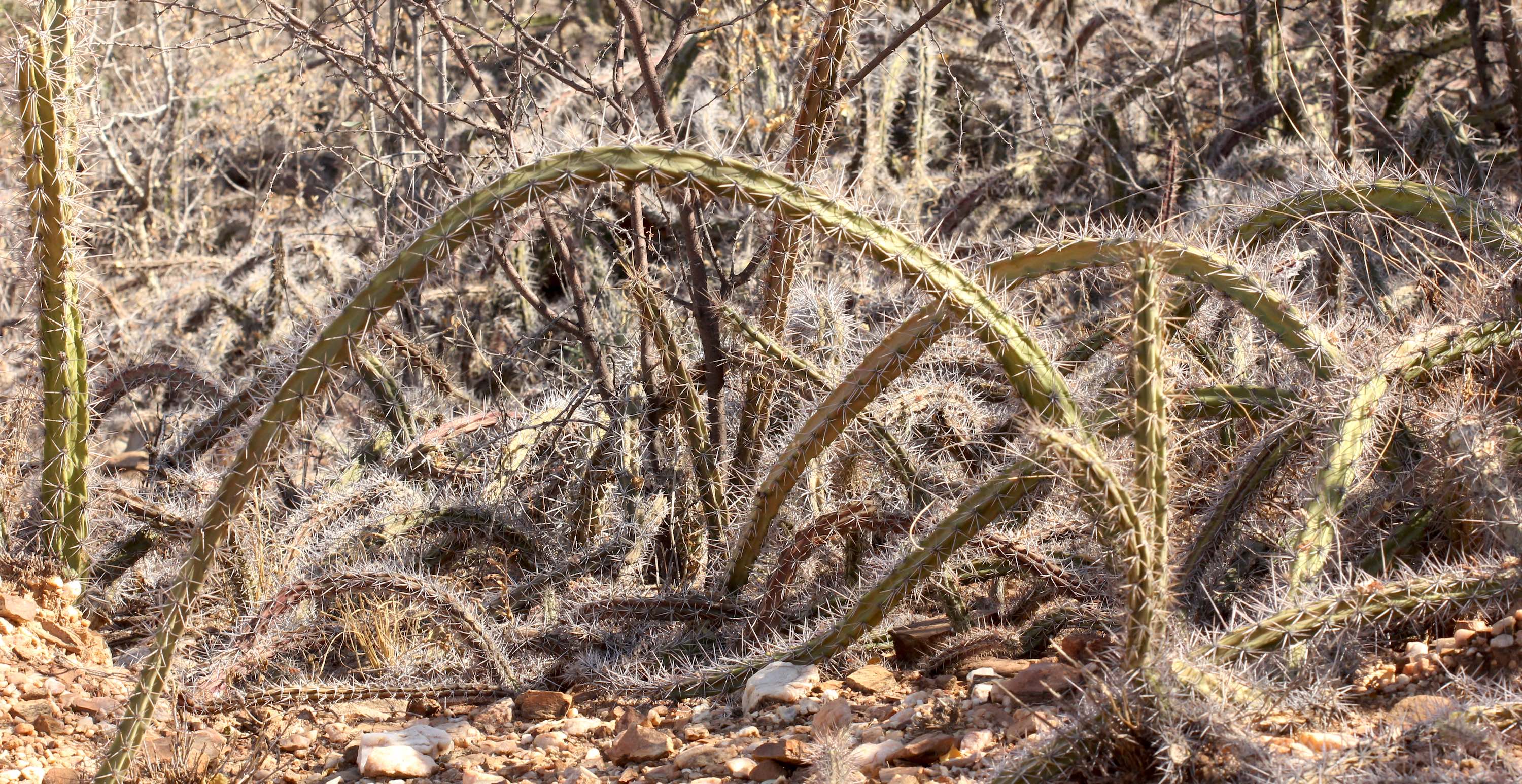
It is therefore no surprise that some of Namibia's worst alien invasive plant species are cacti. They love it here, but natural Namibian ecosystems are not prepared for cacti. We have many desert-adapted plant species, such as Euphorbia, but they are not from the cactus family. This means that while we have insects and other animals that eat many of our native plants, they cannot eat cacti and therefore leave them alone. The spiny nature of cacti exacerbates the problem – when they grow in dense stands they effectively prevent anyone or anything from using that land.
The implications of cactus invasion for agriculture are clear – dense stands of cacti effectively steal land from farmers, thus reducing the carrying capacity of their farms. Neither livestock nor wild herbivores can eat cacti, and animals (even as small as birds and reptiles) trying to move through these stands are injured in the process. In urban areas, domestic pets that encounter cacti often require veterinary treatment to remove cactus spines. Meanwhile, the indigenous plants that would usually grow in these places are smothered.
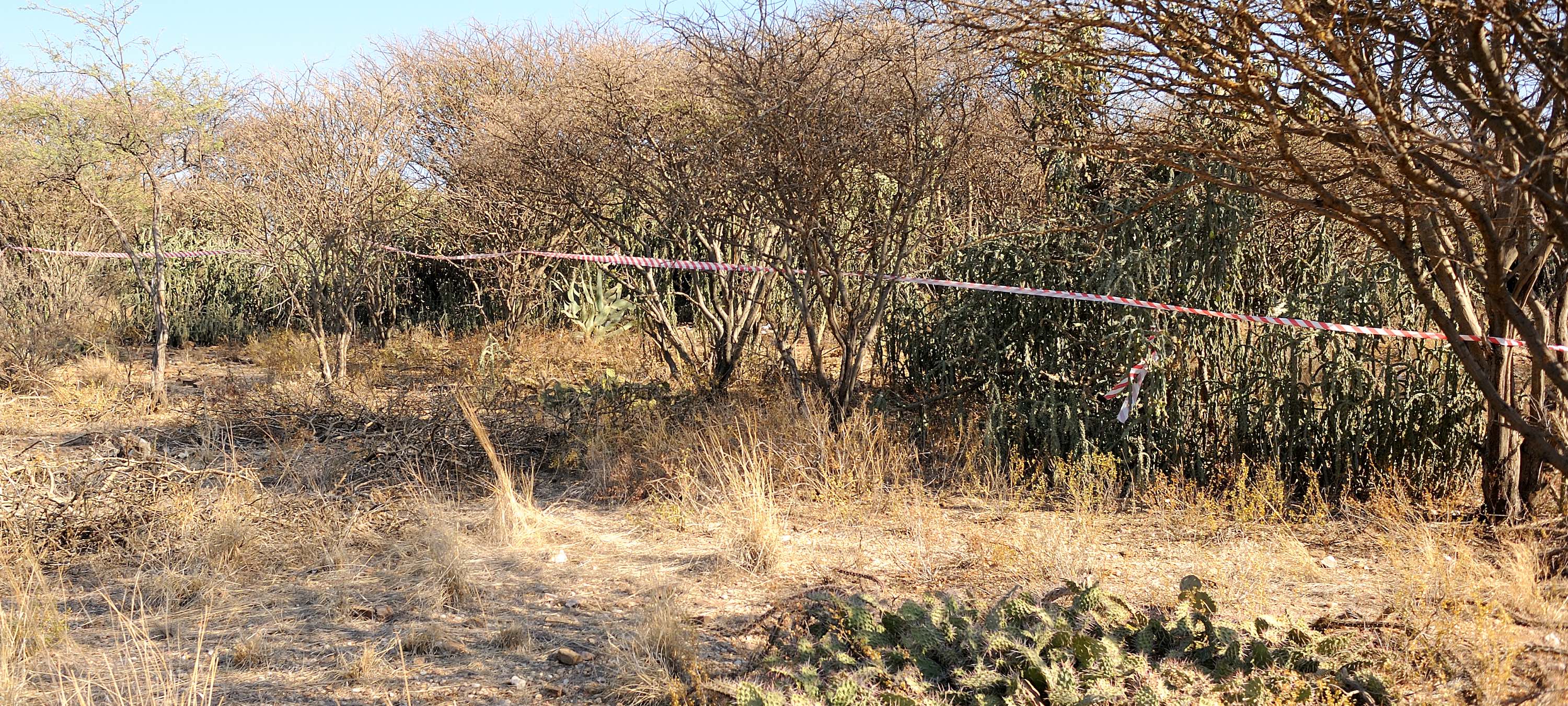
Alien invasive plants thus pose a twin threat to biodiversity and human livelihoods, which is recognised by the Ministry of Environment, Forestry and Tourism (MEFT) in its National Biodiversity Strategy and Action Plan. Several non-governmental organisations are similarly concerned with this threat. The Cactus Clean-Up initiative has created awareness about this problem and spearheaded the manual control of cacti in Windhoek and surrounds for many years. More recently, the Namibian Chamber of Environment (NCE) and the Botanical Society of Namibia (BotSoc) partnered with Rhodes University in South Africa to attack cacti with a different weapon – biological control (also known as biocontrol).
How natural enemies become biocontrol agents
The concept of biological control hinges on the fact that plants in their native environments do not become invasive because they have natural enemies. If we can find those enemies and bring them into the new environment where a specific plant is invading, we can fight the invasion naturally and effectively. But the problem was created in the first place by taking one organism (i.e. the plant) from its natural environment and introducing it into another environment – should we really do the same thing again? Won't the plant's natural enemy follow the same pattern and become an invader, too? Not if we select the right biocontrol agent.
Identifying and introducing biocontrol agents has become a scientific discipline in its own right, precisely to prevent the introduction of yet more invasive species in the process of biological control. Biocontrol scientists have found that insect species are particularly good candidates for plant biocontrol agents. Many insect species have become extremely specialised natural enemies of particular plant species or groups of plants. If they run out of host plants, they will die out rather than attack a different type of plant. These host-specific
insect species are considered for use as biocontrol agents.
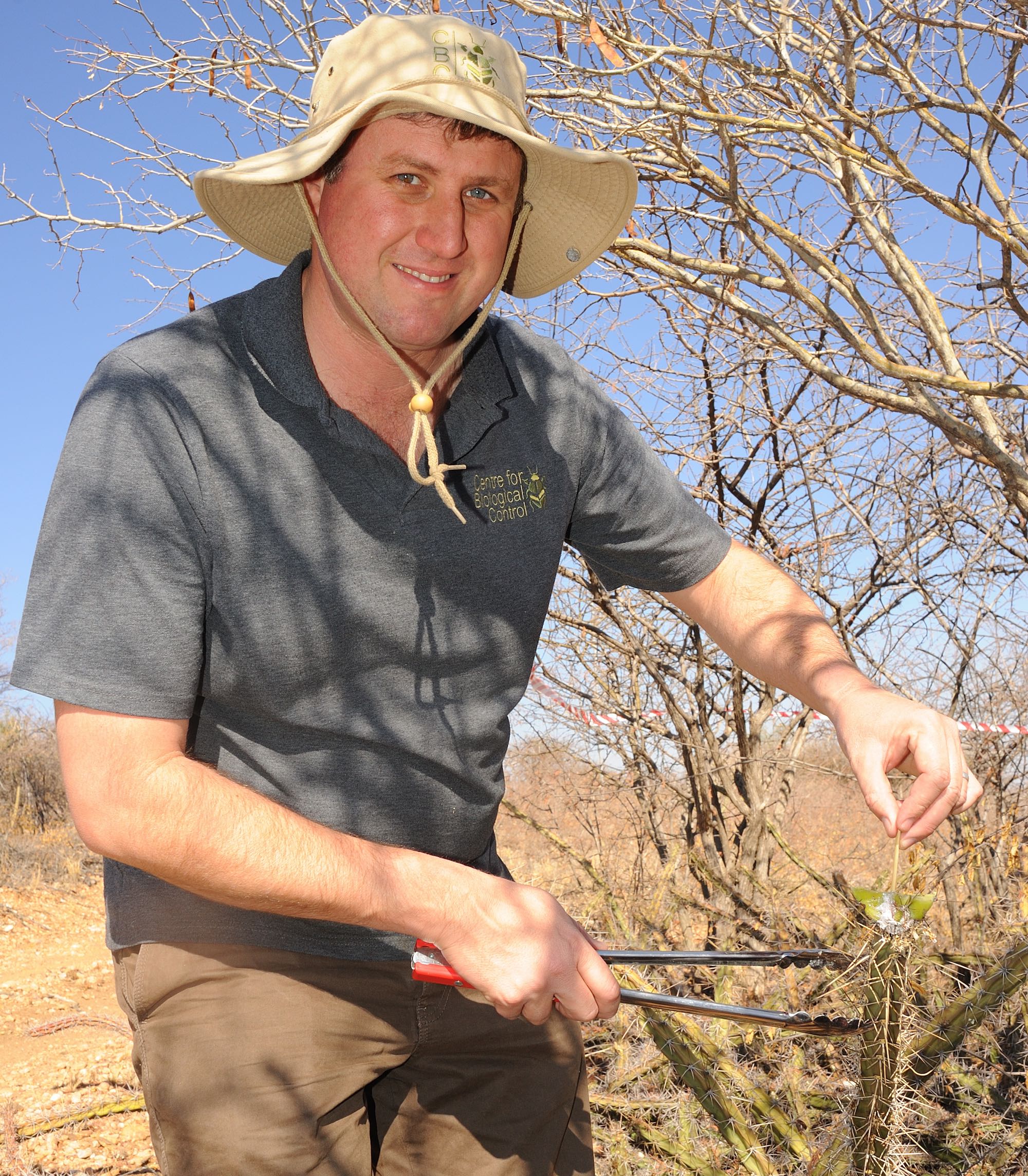
Finding a plant's natural enemy is just the first in a long series of required steps to ensure that a biocontrol agent is truly safe. Scientists breed biocontrol candidates in hermetically sealed laboratories and greenhouses to put them through a series of rigorous tests that determine how host-specific they are and whether they can survive on any indigenous plants. If a candidate insect fails any of these tests (i.e. it is not host-specific enough), then it will not be introduced as a biocontrol agent and a different species must be sought. These tests typically take at least five years for each biocontrol agent. This system has proven extremely effective during the 100 years that biological control agents have been used around the world – out of the 400 agents released into dozens of countries during the past century, not a single one of them has become an invasive species.
When selecting a biocontrol agent to attack cactus species in Namibia, we benefited enormously from the hard work and expertise of biocontrol scientists in neighbouring South Africa and in Australia. The Centre of Biological Control (CBC) at Rhodes University is an African leader in identifying and introducing safe biocontrol agents for many different alien invasive plants. Cacti have a long history of invading the drier regions of South Africa; developing cactus biocontrol agents has thus been high on the South African scientists' agenda for decades. All of the rigorous tests described above for cactus biocontrol agents had already been done, which meant that the CBC simply selected tried-and-tested biocontrol agents and gave them to Namibia free of charge.
Another factor that works in Namibia's favour is that we have no indigenous cactus species. Even biocontrol agents that could attack a range of cacti species (and therefore not be narrowly host-specific) would still not survive on any of our native plants. The biocontrol agents that the CBC selected for release in Namibia were released in the 1970s and 80s in South Africa and have only attacked cactus species.
Nevertheless, an Environmental Impact Assessment (EIA) on these particular biocontrol agents was undertaken in accordance with Namibia's Environmental Management Act prior to their release. The EIA process ensures that all risks are thoroughly considered, technical and interested stakeholders are consulted and all appropriate precautions are taken. This EIA was completed in 2019 and an Environmental Clearance Certificate was issued to allow the biocontrol agents to be brought into the country and released on the invasive alien cacti. Consequently, when Dr Iain Paterson of the CBC arrived in Namibia in late 2019 with his cargo of insect-infected bits of cacti, we had total confidence that the agents he released in Windhoek would be safe and effective.
Controlling alien invasive plants takes a village
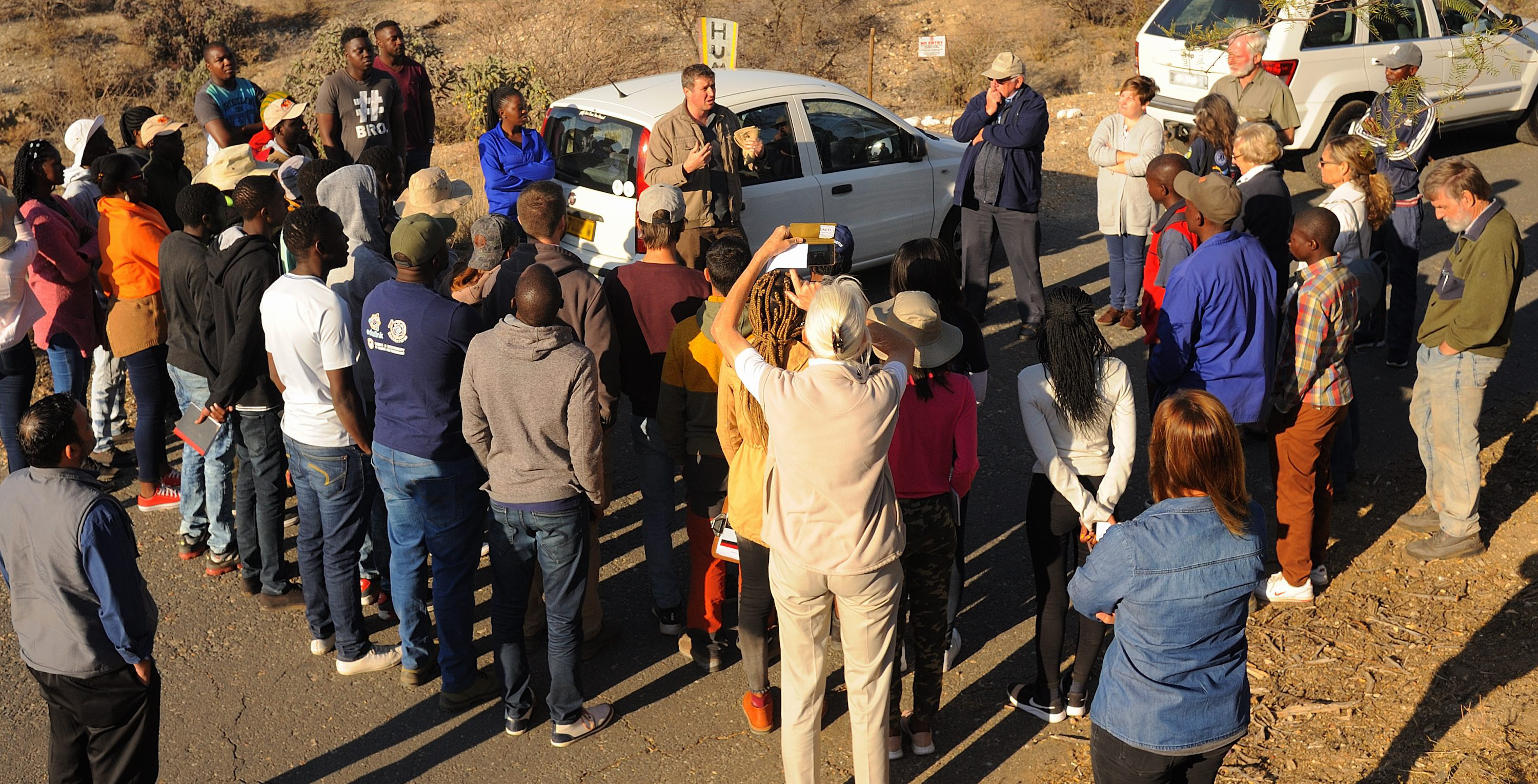
Although our newly introduced bug squads
are establishing themselves and getting to work on dense cactus stands around Windhoek, there is still an important role for humans to play in the fight against aliens. We can help spread the biocontrol agents to new stands of cactus, continue to manually remove cactus species that are not targeted by biocontrol agents and create awareness among gardeners and nurseries about invasive cacti that should not be planted or propagated.
After the initial release, the biocontrol agents need time to grow their population and fully infest the first stands of cacti. They are not good at dispersing over long distances, however, so once they are established they could use a helping hand to reach other cactus stands. Dr Paterson released two biocontrol agents – a cochineal insect and a mealy bug – that are both difficult to see with the naked eye. What we can see is the evidence that a plant is infected by looking for the tell-tale signs that the insects leave behind. By taking bits of infected cacti and attaching them to currently healthy cacti, we can spread the biocontrol agent without even seeing it.
The cochineal insect that was released to control dense stands of imbricated or devil's rope cactus (Cylindropuntia imbricata) found in and around Windhoek is now established enough to be spread further. If you know of dense stands of uninfected imbricated cactus, then all you need to do is cut or pull off pieces (i.e. cladodes) of infected cactus and wedge them into uninfected plants. Students from the Namibian University of Science and Technology (NUST) are monitoring the spread of the biocontrol agents with assistance from BotSoc. If you would like to help spread the biocontrol agent, see contact details in the text box below.

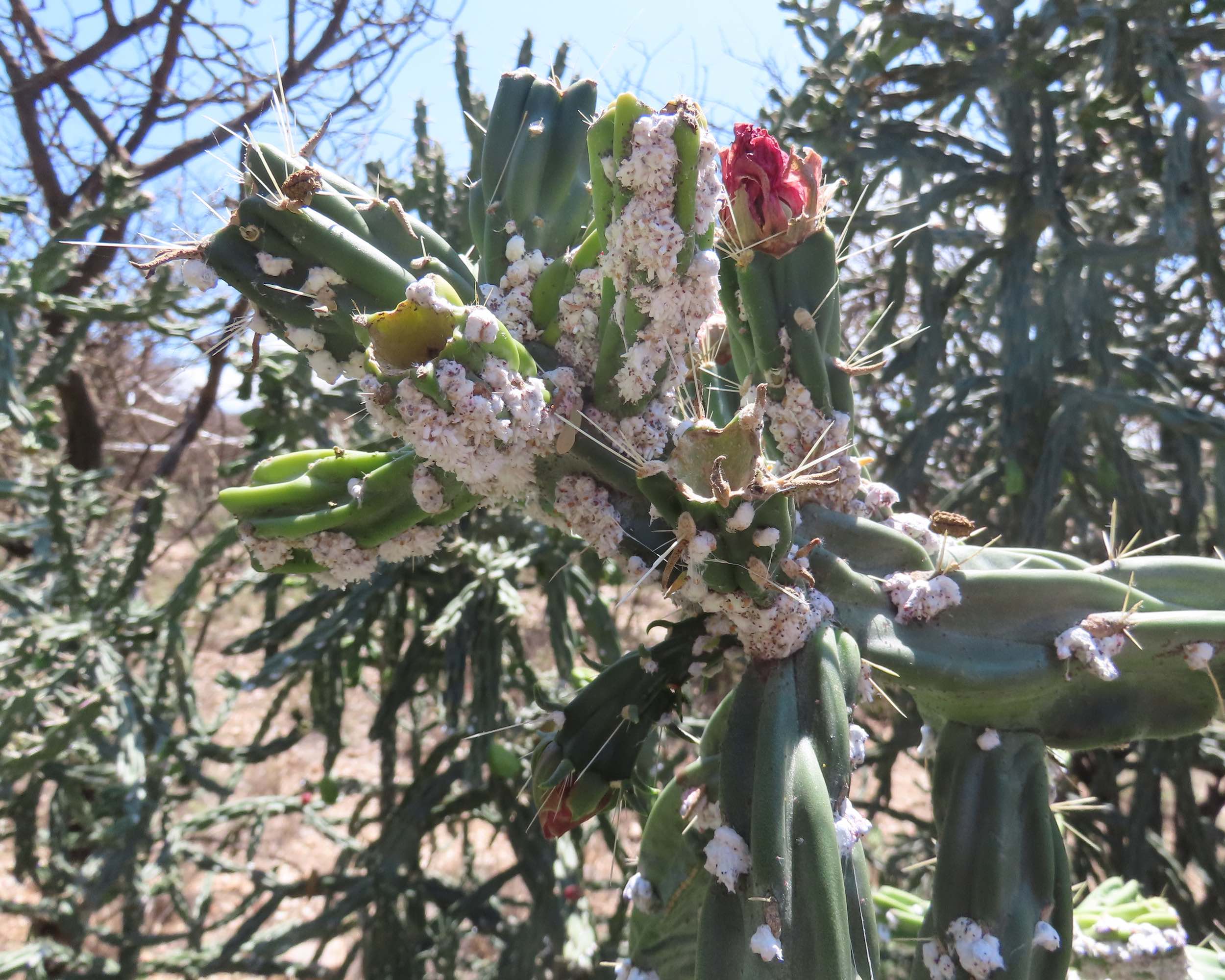
Besides spreading biocontrol agents on the two target cactus species – the other one is the midnight lady or snake cactus (Harrisia pomanensis) – we still need to manually control many other cactus species. The crew from the Cactus Clean-up Initiative does the hard work of cutting down cacti and removing them. This private initiative needs financial support to employ and transport cactus removal teams to different parts of Windhoek that have severe cactus problems (see text box for details).
Finally, every keen gardener and nursery in Windhoek can play a role by finding out which cactus species are invasive and removing them or not planting them in the first place. Cacti arrived in Namibia because they were desirable as garden plants that do not need much water, but this is exactly why they rapidly got out of control. Namibia has many beautiful indigenous plants that grow happily with little or no attention, so gardeners and nurseries would do well to focus on propagating and growing these species. Together with the biocontrol agents, we can stop this alien invasion before it steals any more land and further damages our natural ecosystems.
Further information:
To find out where the infected cactus stands are and how you can spread them, contact Coleen Mannheimer at manfam[at]iafrica.com.na.
To support the Cactus Clean-up Initiative, visit https://www.cactusclean-up.com/ or contact Gunhild Voigts at gunhild.voigts[at]gmail.com.
For more information on indigenous plants in Namibia, visit http://botanicalsociety.biodiversity.org.na/.
For articles on similar topics, please click one of the following options:
If you enjoyed this page, then you might also like:

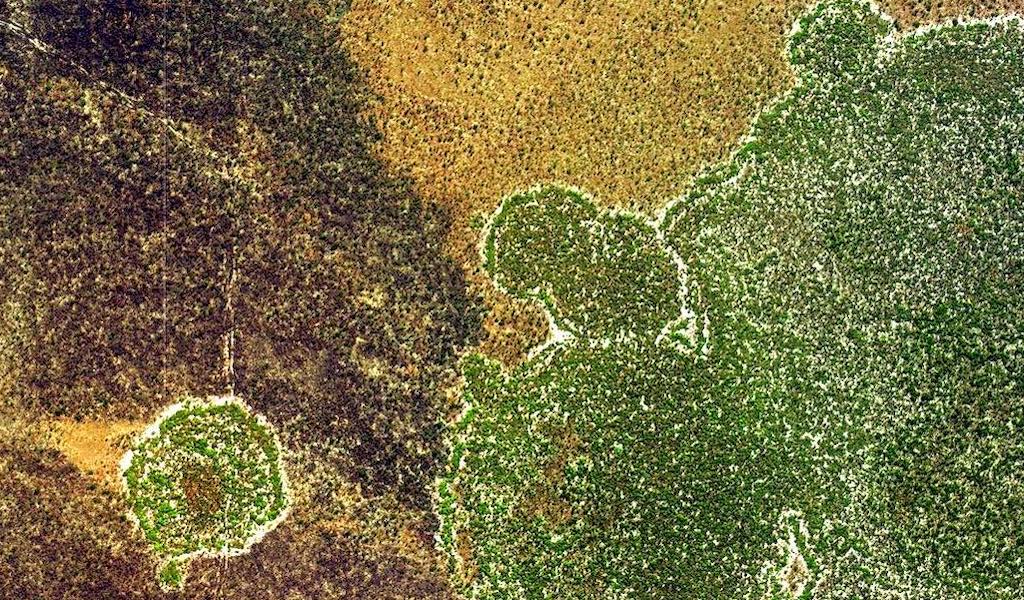
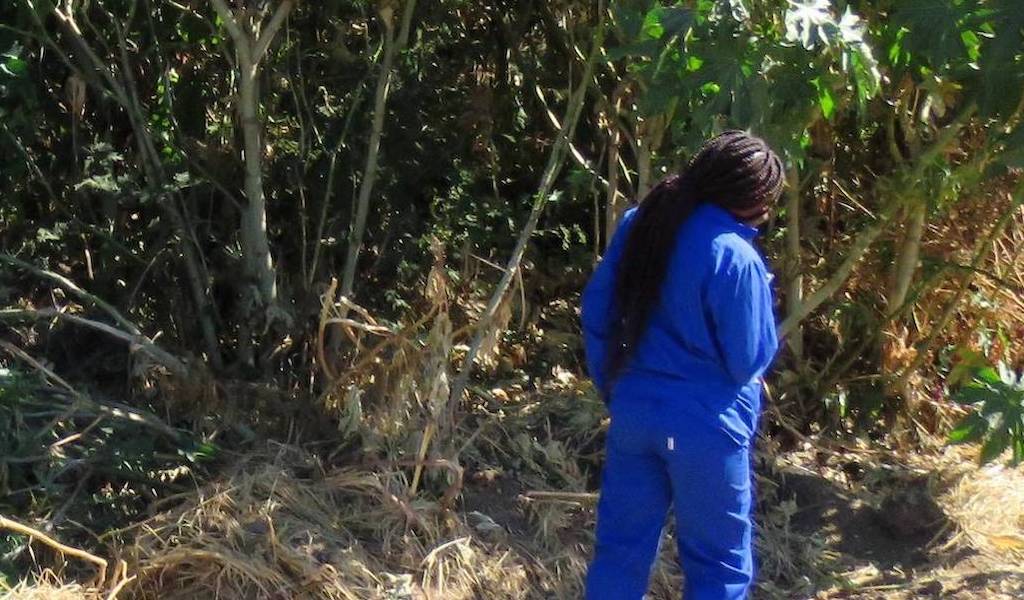
For more great articles from Conservation Namibia see below...
Conservation Namibia brought to you by:
We use cookies to monitor site usage and to help improve it. See our Privacy Policy for details. By continuing to use the site, you acknowledge acceptance of our policy.
